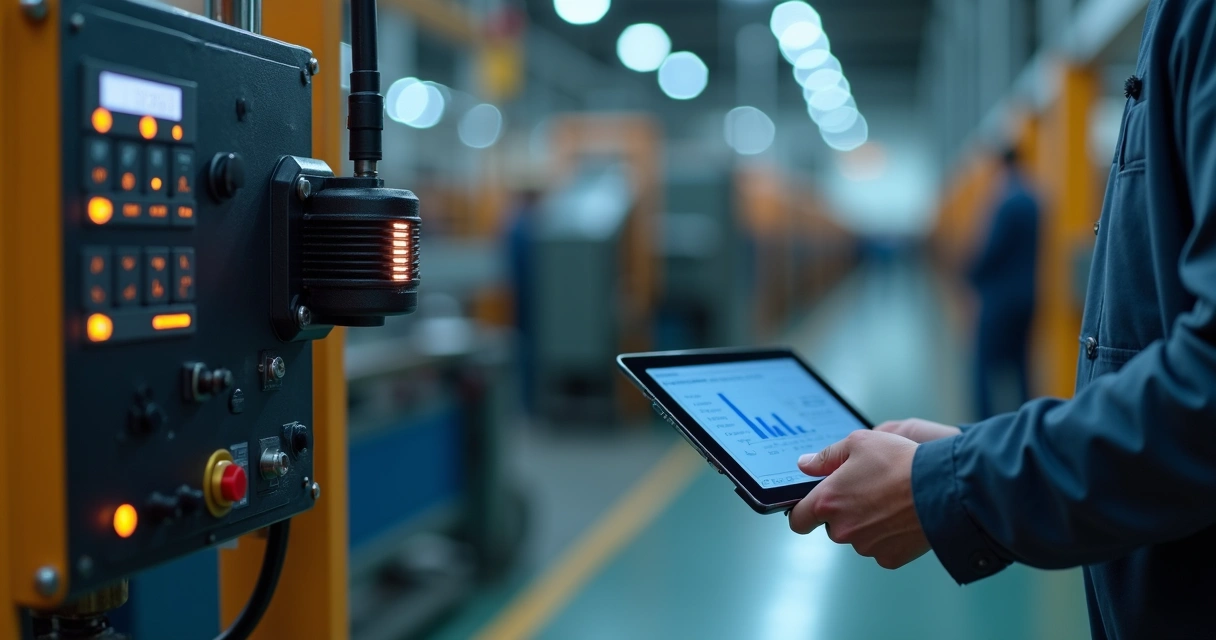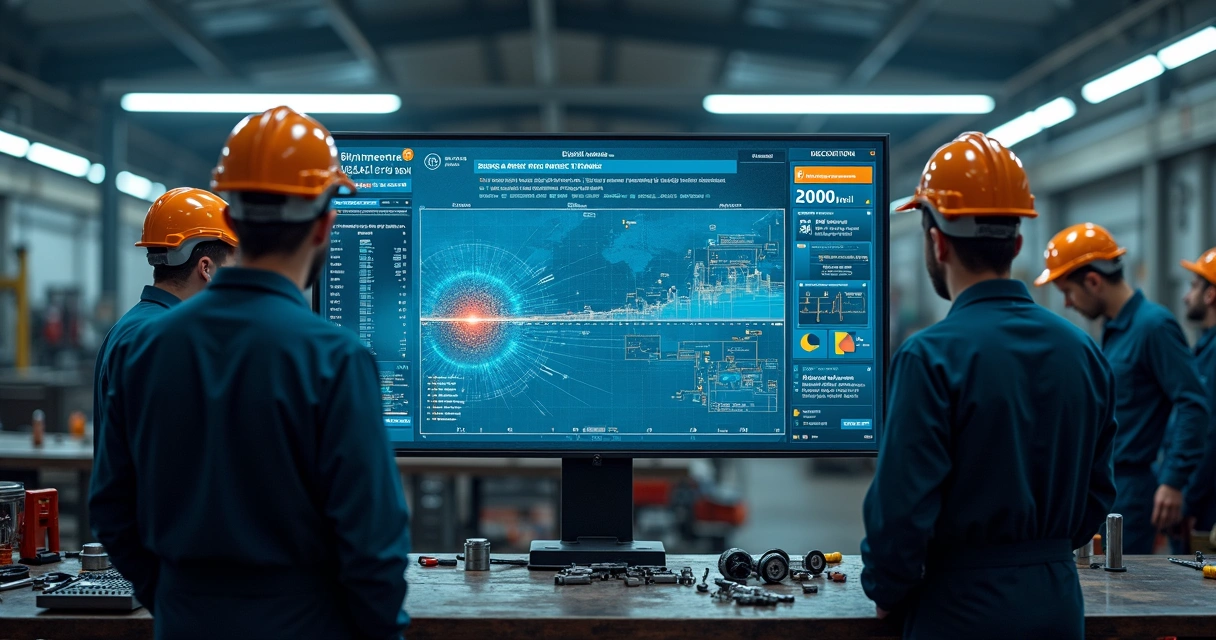AI-Powered Root Cause Analysis: A Practical Guide for Maintenance Teams

Machines break. Processes stall. Sometimes, things just won’t work—and no one knows why, at first. For years, maintenance and IT teams have chased these ghostly problems, hunting for clues and patterns. But now, artificial intelligence steps in. Root cause analysis, once a slow puzzle, is changing fast. Here, we’ll see how AI-driven approaches bring confidence and clarity to maintenance. If you’ve ever wished for fewer surprises and better answers, this story is for you.
How artificial intelligence reshapes root cause analysis
Root cause analysis used to be a game of patience. Teams had to sift through logs, interview operators, and rely on years of experience. The wrong guess could mean hours lost—and the right answer sometimes felt more like luck than science. Now, with AI, the story evolves.
- Data doesn’t sleep: Sensor outputs, vibration readings, maintenance histories, and even operator comments feed real-time models.
- Patterns reveal themselves: Machine learning algorithms highlight subtle correlations—things a person might overlook.
- AI agents learn and adapt: As more incidents are recorded, smarter insights emerge, boosting a team’s confidence and speed.
Root cause becomes obvious. Action comes sooner.
Platforms like Prelix take these ideas further, turning equipment failures into automated insights and practical diagrams. Maintenance teams no longer wait; they respond, knowing the ‘why’ behind each failure almost instantly.
 Pushing predictive maintenance beyond old barriers
Pushing predictive maintenance beyond old barriers
Predictive maintenance is the art—and perhaps a bit of science—of fixing things before they break. Traditional approaches relied on scheduled checks or gut feelings. But by bringing AI into the fold, we see a real change. According to recent research, AI-based techniques catch faults up to 90% more accurately than legacy methods.
So, how does it work in practice?
- Vibration analysis: Special sensors detect early signs of wear, misalignment, or imbalance. AI models learn the unique ‘fingerprint’ of each machine’s healthy operation and flag small deviations before trouble strikes.
- Prescriptive alerts: Instead of simply warning ‘something’s wrong,’ AI suggests what to do next—replace this bearing, inspect that circuit, or update a specific firmware.
- Data fusion: Information from multiple sources—IoT sensors, logs, even past failures—is combined for better context.
Companies embracing smarter maintenance see measurable payoffs. McKinsey & Company highlights that generative AI can automate failure modes and effects analysis (FMEA), reducing downtime and shrinking manual reporting efforts. In manufacturing, these advances may save up to half a trillion dollars worldwide, as shown in studies on predictive maintenance and defect detection.
Fix what matters before it fails, not after.
Prevention, detection, and safety: seeing more, acting sooner
No one wants a repeat incident—or worse, a chain reaction across systems. AI-driven failure analysis offers honest answers: why did this happen, and what’s next?
But prevention is never only about machinery. In many sectors, especially IT and manufacturing, vulnerabilities lurk—sometimes silent, sometimes loud. AI models catch scenarios that could lead to expensive outages or even security breaches.
- Continuous monitoring: Systems never rest. Algorithms absorb streams of real-time metrics and spot drift from the normal baseline.
- Security automation: When an anomaly is detected, smart routines investigate, suggest mitigations, and sometimes quarantine affected systems before harm spreads.
- Integrated response: Human planners are looped in quickly, but they see prioritized actions, not mountains of raw numbers.
According to data on automated safety analysis, AI agents can speed up investigations, reducing analysis times by as much as 90%. The lesson: fast answers mean fewer headaches, less damage, and—sometimes—lives saved.
 Machine learning and automation in risk mitigation
Machine learning and automation in risk mitigation
Sometimes, the most telling patterns are buried in gigabytes of noise. Machine learning turns this noise into a symphony—or at least, a readable script. Think of it as an always-on assistant, comparing each new anomaly to a library of past issues.
Prelix, for example, uses machine learning to produce instant reports and visualize connections using techniques like the five whys. In practice, once an outage is detected, the platform pieces together not just what failed, but why—drawing links between operational data, human actions, and environmental events.
Some practical effects of this approach:
- Reduce recurring failures by uncovering less-obvious root causes.
- Spot combinations of vulnerabilities that otherwise might slip through standard checks.
- Train staff quickly, using real examples and data-driven lessons learned.
Patterns matter. Lessons last.
Challenges to adopting AI-powered failure analysis
Of course, not every team will adopt these solutions overnight. There are stubborn obstacles:
- Change isn’t comfortable: Some technicians or engineers trust their routines, not new screens. Leaders must show value through simple wins—maybe a single ‘impossible’ problem solved with AI, or a first big reduction in downtime.
- Training never ends: As systems grow more complex, people need ongoing support. Even the best AI tools mean little if staff can’t understand their results or adapt processes around new insights.
- Data must be reliable: Garbage in, garbage out. Maintenance histories, sensor accuracy, and feature selection all shape algorithm success.
Despite these barriers, stories of steady improvement abound. A study from McKinsey reports up to 25% cost reductions and a 15% increase in asset lifespan for organizations integrating machine learning into their maintenance strategies.
 The road ahead: new trends in AI-driven diagnostics
The road ahead: new trends in AI-driven diagnostics
Where does AI-powered root cause work go next? It’s already moving well past today’s dashboards and simple alerts.
- Generative models: These tools can simulate fault scenarios, helping teams stress-test systems or uncover hidden weaknesses. According to recent industry analysis, automation of tasks like FMEA means less time spent on bureaucracy and more time on actual repairs and improvements.
- IoT everywhere: Sensors grow smaller, cheaper, and smarter. Soon, nearly every asset could tell its own story—predicting failure, requesting service, or checking nearby systems for shared threats.
- Zero Trust security: As IT blends more closely with operational technology, security matters more. AI supports this with real-time authentication, anomaly detection, and automatic containment of risks.
- Integrated platforms: Tools like Prelix already show how maintenance, compliance, and reporting can all be part of a seamless process—operators see one source of truth, not scattered spreadsheets.
The next outage won’t be a surprise. Not anymore.
Conclusion: taking the next practical step
AI-powered root cause analysis isn’t just a trend. It’s changing how people prevent failures and make decisions every day, from factory floors to server racks. The biggest benefits? Fewer unknowns, safer work, and—perhaps best of all—time spent fixing things that matter most.
If you’re ready to shift from old habits to modern answers, now is the moment. Prelix gives your maintenance team the foundation to see further and act faster. Make every failure a chance to grow—connect with us and begin your transformation today.
Frequently asked questions
What is AI root cause analysis?
AI root cause analysis means using artificial intelligence to find out why equipment, processes, or systems fail. Instead of relying only on human experience, AI reviews lots of data, connects patterns, and suggests the most likely underlying reason for the problem. It often uses techniques like machine learning, pattern recognition, and even natural language processing to speed up what used to be a very manual, time-consuming task.
How does AI help find failures?
AI helps by quickly sorting through data—like sensor readings, logs, or maintenance reports. It can notice subtle changes or combinations of issues a person might miss. Algorithms highlight likely problem spots, predict possible failures, and sometimes even tell technicians what steps to take next. AI helps teams act faster and miss fewer root causes, lowering the risks of mistakes or repeat incidents.
Is AI-based failure analysis worth it?
Most case studies—like those from McKinsey & Company—suggest it often pays off. AI and machine learning can reduce unplanned downtime, cut maintenance costs, and lengthen asset life. It’s not magic, though: results depend on good data, staff buy-in, and ongoing training. But for many teams, the benefits in cost savings, speed, and reliability outweigh the initial effort.
How much does AI failure analysis cost?
There’s no single answer. Costs vary depending on how big your operation is, the complexity of machines, and the level of integration needed. Some platforms offer subscription models; others require on-site installation and custom configuration. However, as AI tools become more common and modular, pricing continues to drop—and the savings from prevented failures or shorter downtimes often make up for the upfront investment. It’s wise to compare different solutions and match them to your own risk profile.
What are the best AI tools for analysis?
The best option depends on your industry, needs, and systems. Solutions like Prelix, for example, focus on maintenance teams in industrial environments, turning complex incidents into instant, actionable reports and easy-to-read diagrams. The real “best” tool is one that integrates with your workflow, gives clear insights, and grows with you—so always look for platforms with adaptability, user support, and continuous improvement.
